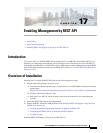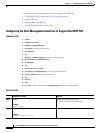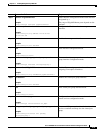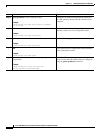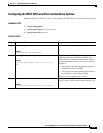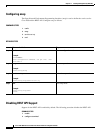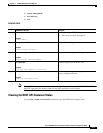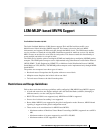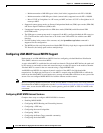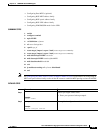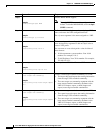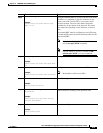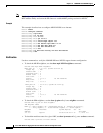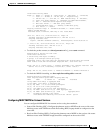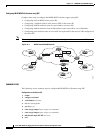
CHAPTER
18-1
Cisco ASR 1000 Series Aggregation Services Routers Software Configuration Guide
OL-16506-17
18
LSM-MLDP-based MVPN Support
First Published: November 28, 2012
The Label Switched Multicast (LSM) feature supports IPv4 and IPv6 multicast traffic over a
Multi-Protocol Label Switching (MPLS) network. This feature is based on the basic MPLS
infrastructure and supports IP multicast traffic through the MPLS clouds. The LSM feature enables
service providers to extend the existing MPLS backbone network for multicast services. By default,
MPLS creates an out-label for an in-label for each packet. This feature extends this functionality to
create multiple out-labels for a single in-label.
The LSM service includes point-to-multipoint (P2MP) and multipoint-to-multipoint (MP2MP) packet
transport. The P2MP packet transport can be implemented using either Resource reSerVation Protocol
(RSVP) P2MP - Traffic Engineering (P2MP-TE), or Multicast Label Distribution Protocol (MLDP)
based Multicast VPN (MVPN). The MP2MP packet transport can be implemented only through MLDP
based MVPN.
The packets are transported over three types of routers:
• Head-end router: Encapsulates the IP packet with one or more labels.
• Midpoint router: Replaces the in-label with an out-label.
• Tail-end router: Removes the label from the packet.
Restrictions and Usage Guidelines
Follow these restrictions and usage guidelines while configuring LSM-MLDP-based MVPN support:
• A head-end router does not support multiple sub Label Switched Paths (subLSPs) belonging to
different tunnels, over the same physical interface.
• RSVP-TE-based LSM is not supported; only MLDP-based LSM is supported.
• Process-level software forwarding is not supported.
• Rosen Model MLDP is not supported in the global configuration mode. However, MLDP inband
signaling is supported in the global configuration mode.
• These are the scale considerations for MLDP-based MVPN:
–
Maximum number of Multicast Virtual Route Forwardings (MVRFs) supported on each PE is
600.
–
Maximum number of m-route supported on each PE is 200,000.
–
Maximum number of OIF supported is 1000.



